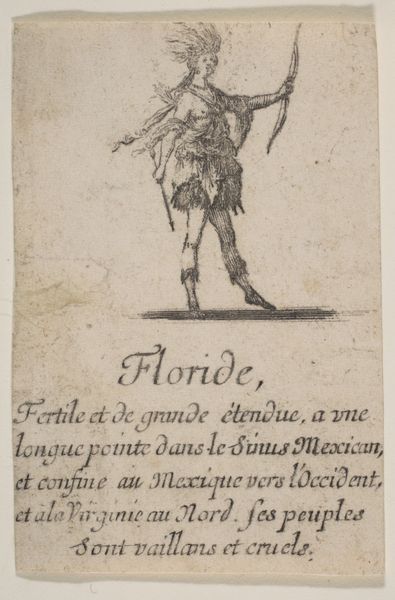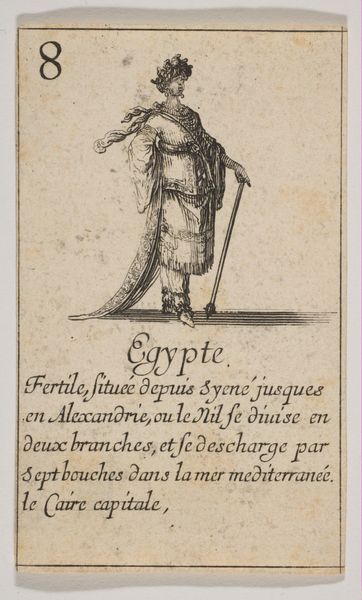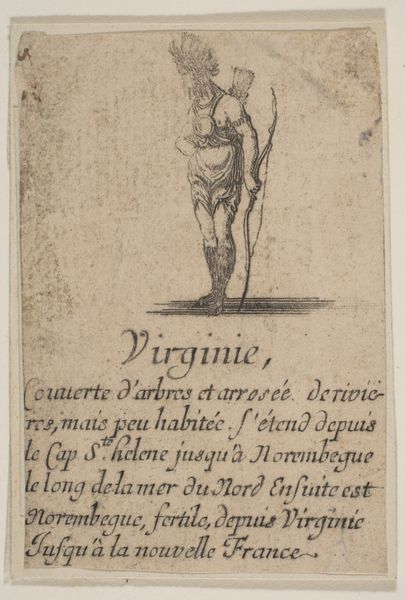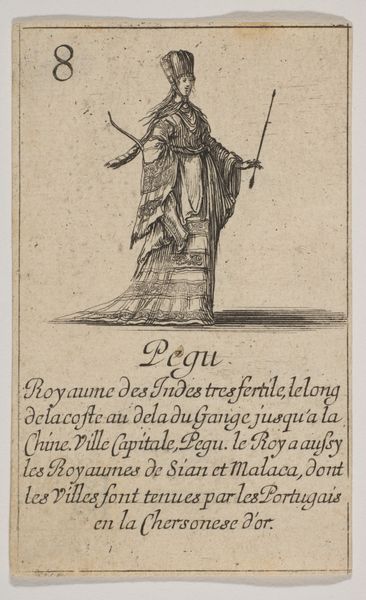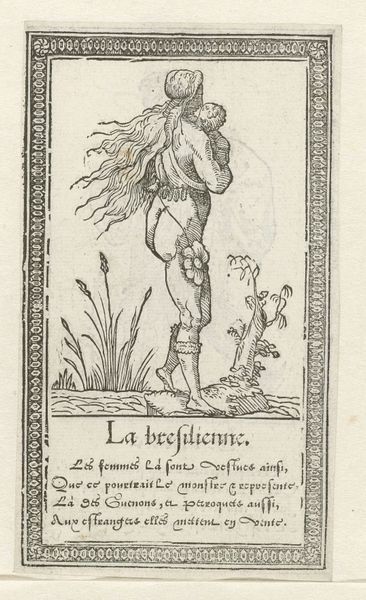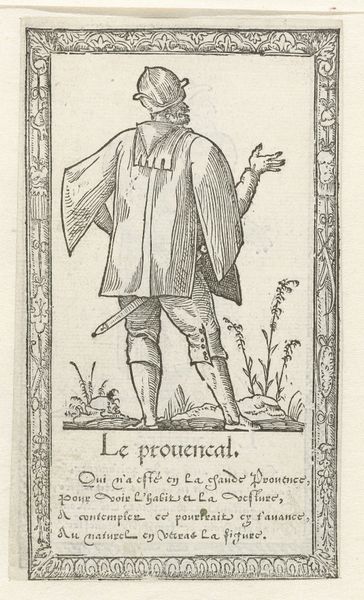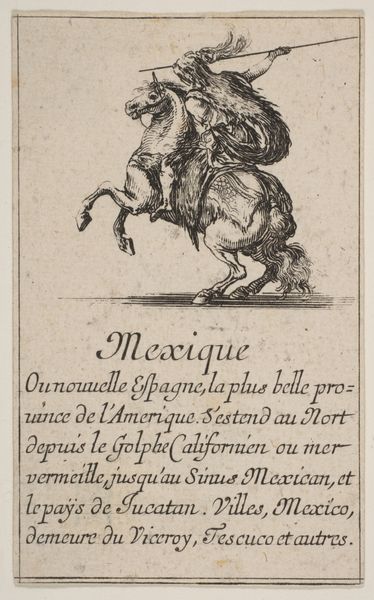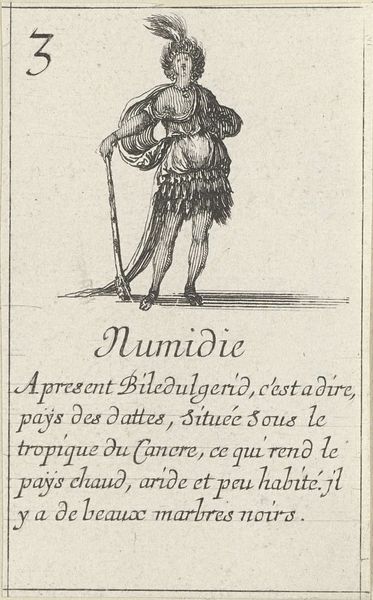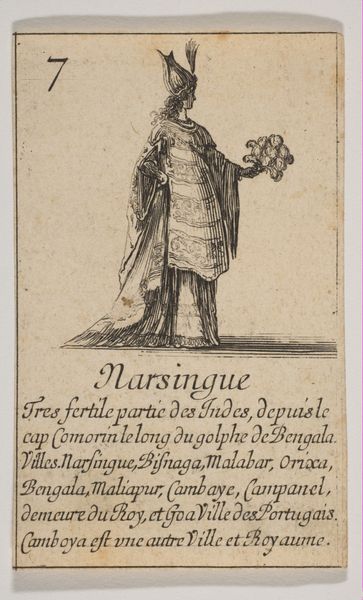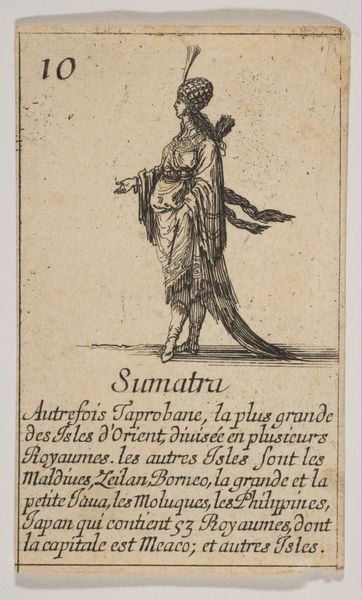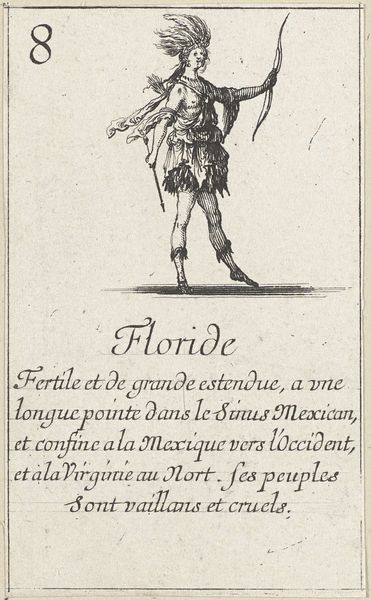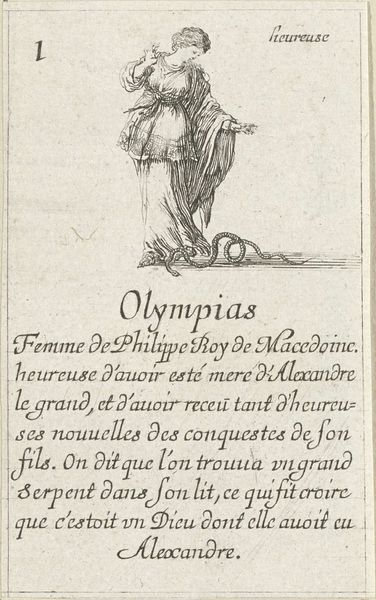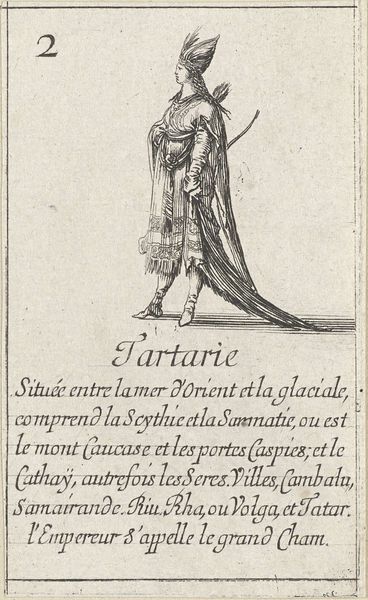
Brazil, from the playing cards "Jeu de la Géographie" 1644
0:00
0:00
drawing, print, pen, engraving
#
portrait
#
drawing
#
narrative-art
#
baroque
# print
#
figuration
#
coloured pencil
#
pen
#
engraving
Dimensions: Sheet: 3 1/2 × 2 3/16 in. (8.9 × 5.6 cm)
Copyright: Public Domain
Curator: Here we have "Brazil, from the playing cards 'Jeu de la Géographie'," created around 1644 by Stefano della Bella. It's a pen and ink engraving, currently held at the Metropolitan Museum of Art. Editor: It strikes me immediately as a study in contrasts. The figure of Brazil is rather elaborately dressed in what appears to be fur, feathers and decorative footwear. Yet there's a clear attempt to convey an idea of “native” or “exotic.” Curator: Precisely. The artist employs engraving—a printmaking process that demands skill. The material considerations themselves carry social weight. These cards were luxury items for the elite, commenting on the accessibility of knowledge through the commodification of lands like Brazil. What kind of work went into creating the object, and how does this affect the message? Editor: It also invites speculation as to the worldview held by Europeans concerning non-European peoples. This representation, this "Brazil" figure – the offering of local produce is an image rooted deeply in European explorations of other lands and in symbolic ownership. Curator: It brings forth discussions of labor and colonial representation; a far cry from our modern ideas around trade! The raw materials and labor involved in exploiting Brazilian resources would never be alluded to on these playing cards for an exclusive elite. Editor: Right, and notice the dress; the feather headdress, the fruit, and what seems like indigenous attire are all signifiers deployed to construct this visual shorthand. It’s the same language utilized across paintings, maps and written accounts during the era of discovery. The dress acts as a potent cultural marker, even now. Curator: And it's fascinating to see that iconography employed on something as playful and accessible as playing cards. To what extent do such symbolic gestures promote curiosity about faraway lands, or reinforce societal divisions between people? I believe by interrogating the tangible elements involved in art's making, and in art's owning, that the true impact is more clear. Editor: Thinking about it, those persistent symbols shape not just the period’s perceptions, but their effects extend far into the modern experience of shared cultural meanings. Curator: Agreed. Studying the tangible aspects coupled with the symbolic offers a powerful commentary on the intersections of art, labor, colonialism, and cultural memory. Editor: Definitely a striking composition that yields abundant cultural echoes to explore even now!
Comments
No comments
Be the first to comment and join the conversation on the ultimate creative platform.
